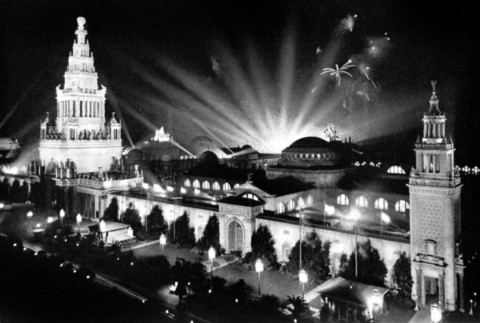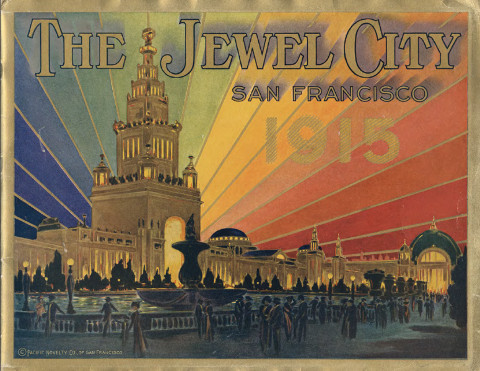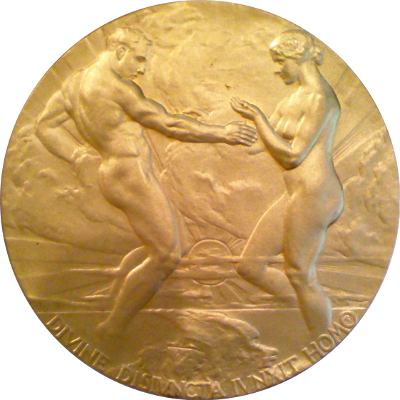Panama-Pacific Exposition 1915
 The Panama–Pacific International Exposition was a world's fair held in San Francisco,
between February 20 and December 4 in 1915. Its ostensible purpose was to celebrate
the completion of the Panama Canal, but it was widely seen in the city as an opportunity
to showcase its recovery from the devastating 1906 earthquake. The fair was constructed
on a 635 acre (2.6 km2) site in San Francisco, along the northern shore, between the
Presidio and Fort Mason, now known as the Marina District.
The Panama–Pacific International Exposition was a world's fair held in San Francisco,
between February 20 and December 4 in 1915. Its ostensible purpose was to celebrate
the completion of the Panama Canal, but it was widely seen in the city as an opportunity
to showcase its recovery from the devastating 1906 earthquake. The fair was constructed
on a 635 acre (2.6 km2) site in San Francisco, along the northern shore, between the
Presidio and Fort Mason, now known as the Marina District.
 The centerpiece was the Tower of Jewels, which rose to 435 feet and was covered with over
100,000 cut glass Novagems. The 3⁄4 to 2 inch colored "gems" sparkled in sunlight throughout
the day and were illuminated by over 50 powerful electrical searchlights at night.
The centerpiece was the Tower of Jewels, which rose to 435 feet and was covered with over
100,000 cut glass Novagems. The 3⁄4 to 2 inch colored "gems" sparkled in sunlight throughout
the day and were illuminated by over 50 powerful electrical searchlights at night.
In front of the Tower, the Fountain of Energy flowed at the center of the South Gardens, flanked by the Palace of Horticulture on the west and the Festival Hall to the east. The arch of the Tower served as the gateway to the Court of the Universe, leading to the Court of the Four Seasons to the west and the Court of Abundance to the east. These courts formed the primary exhibit area for the fair, which included the Food Products Palace, the Education and Social Economy Palace, the Agriculture Palace, the Liberal Arts Palace, the Transportation Palace, the Manufacturers Palace, the Mines and Metallurgy Palace, and the Varied Industries Palace. The Machinery Palace, the largest hall, dominated the east end of the central court.
At the west end of central court group was the Palace of Fine Arts. Further west toward the bay down The Avenue of the Nations were national and states' buildings, displaying customs and products unique to the area represented. At the opposite end of the Fair, near Fort Mason was "The Zone", an avenue of popular amusements and concessions stands.
The Medal of Award was designed by John Flanagan, one of the great medallic sculptors of the day.
Click on the Medals tab to see some of the medals issued for this exposition.
Click or tap the medals to see their reverse sides.


The medal's obverse bears male and female nudes symbolizing the union of the Western hemisphere by the Panama Canal; in background, sun and clouds above horizon with American isthmus. At bottom, DIVINE DISIVNCTA IVNXIT HOMO
The medal's reverse shows the Panama Pacific International Exposition's Tower of Jewels. On panel below building, MEDAL / OF AWARD; around, PANAMA PACIFIC INTERNATIONAL EXPOSITION SAN FRANCISCO - MCMXV
The medal measures 70.3mm in diameter and was struck in bronze by the United States Mint. Plain bronze, silver-plated, and gold-plated versions are known to exist.
References: Baker 114, MACo 1915-020, Marqusee 150-152
Contact me if you have links that might merit inclusion on this page.